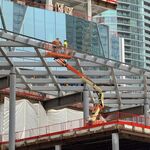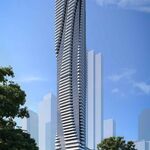King of Kensington
Senior Member
According to Wikipedia:
http://en.wikipedia.org/wiki/Streetcar_suburb
Wikipedia lists the following as streetcar suburbs for Toronto:
The Beaches
Leslieville
Long Branch, Mimico and New Toronto
North Toronto
Port Credit
Runnymede-Bloor West Village
Well-known streetcar suburbs include Evanston and Oak Park, Illinois; Brookline, Massachusetts and the Boston neighborhoods of Dorchester, Roxbury and Jamaica Plain, and Cleveland Heights and Shaker Heights, Ohio.
What perhaps best embodies the "streetcar suburb" not listed would be "Humewood-Cedarvale" (not only because a streetcar runs through it, but also the 1910s/1920s housing stock and lot sizes etc.).
Riverdale and Parkdale also come to mind, and maybe The Annex.
Though perhaps a distinction needs to be mind between pre- and post-WWI streetcar suburbs.
A streetcar suburb is a community whose growth and development was strongly shaped by the use of streetcar lines as a primary means of transportation.
http://en.wikipedia.org/wiki/Streetcar_suburb
Wikipedia lists the following as streetcar suburbs for Toronto:
The Beaches
Leslieville
Long Branch, Mimico and New Toronto
North Toronto
Port Credit
Runnymede-Bloor West Village
Well-known streetcar suburbs include Evanston and Oak Park, Illinois; Brookline, Massachusetts and the Boston neighborhoods of Dorchester, Roxbury and Jamaica Plain, and Cleveland Heights and Shaker Heights, Ohio.
What perhaps best embodies the "streetcar suburb" not listed would be "Humewood-Cedarvale" (not only because a streetcar runs through it, but also the 1910s/1920s housing stock and lot sizes etc.).
Riverdale and Parkdale also come to mind, and maybe The Annex.
Though perhaps a distinction needs to be mind between pre- and post-WWI streetcar suburbs.
Last edited:




